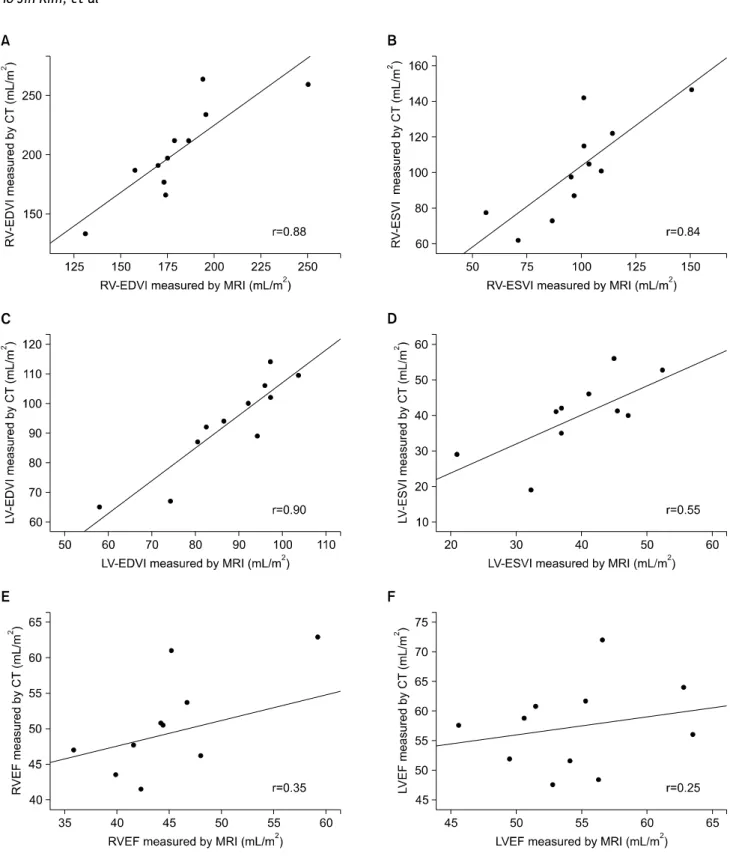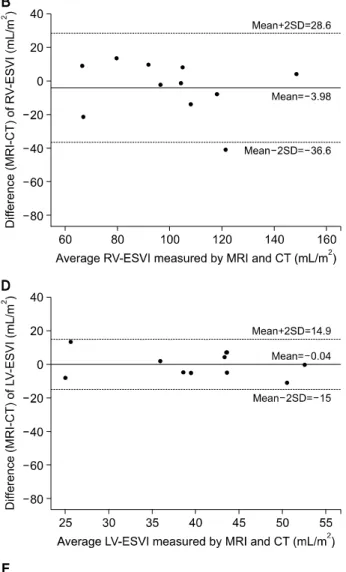ISSN: 2233-601X (Print) ISSN: 2093-6516 (Online)
Received: June 23, 2016, Revised: September 21, 2016, Accepted: October 17, 2016, Published online: April 5, 2017
Corresponding author: Tae-Jin Yun, Division of Pediatric Cardiac Surgery, Asan Medical Center, University of Ulsan College of Medicine, 88 Olympic-ro 43-gil, Songpa-gu, Seoul 05505, Korea
(Tel) 82-2-3010-3589 (Fax) 82-2-3010-6811 (E-mail) tjyun@amc.seoul.kr
© The Korean Society for Thoracic and Cardiovascular Surgery. 2017. All right reserved.
This is an open access article distributed under the terms of the Creative Commons Attribution Non-Commercial License (http://creativecommons.org/
licenses/by-nc/4.0) which permits unrestricted non-commercial use, distribution, and reproduction in any medium, provided the original work is properly cited.
Use of Cardiac Computed Tomography for Ventricular Volumetry in Late Postoperative Patients
with Tetralogy of Fallot
Ho Jin Kim, M.D. 1 , Da Na Mun, M.D. 1 , Hyun Woo Goo, M.D., Ph.D. 2 , Tae-Jin Yun, M.D., Ph.D. 1
1



